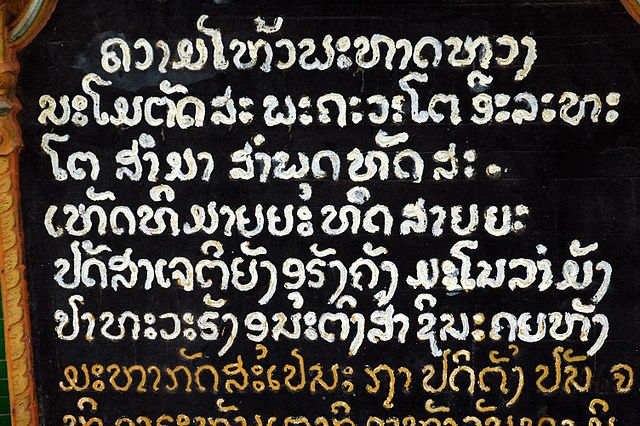Muang Sua was the name of Luang Phrabang following its conquest in 698 by a Tai/Lao prince, Khun Lo, who seized his opportunity when the king of Nanzhao was engaged elsewhere. Khun Lo had been awarded the town by his father, Khun Borom, who is associated with the Lao legend of the creation of the world, which the Lao share with the Shan and other peoples of the region. Khun Lo established a dynasty whose fifteen rulers reigned over an independent Muang Sua for the better part of a century.
Muang Sua as a vassal to Sukhothai in 1293.
Lao, sometimes referred to as Laotian, is the official language of Laos and a significant language in the Isan region of northeastern Thailand, where it is usually referred to as the Isan language. Spoken by over 3 million people in Laos and 3.2 million in all countries, it serves as a vital link in the cultural and social fabric of these areas. It is written in the Lao script, an abugida that evolved from ancient Tai scripts.
Wat Phra That Phanom in Nakhon Phanom. Built in the 16th century over earlier Khmer ruins when Isan was part of Lan Xang, the temple is an important place of pilgrimage, attracting Lao from Laos as well as Isan to its temple festivals.
Temple mural of Wat Photaram in Maha Sarakham Province. Dating to the reign of Siamese Ruler Rama III (1788–1851), the writing is in the Tai Noi script, an old form of the Lao alphabet.
A bilingual Lao-French street sign in Vientiane. Although the influence of French on the Lao language has waned considerably, hundreds of words of French origin are used in Laos.
Lao script on a sign at Wat That Luang, Vientiane.





